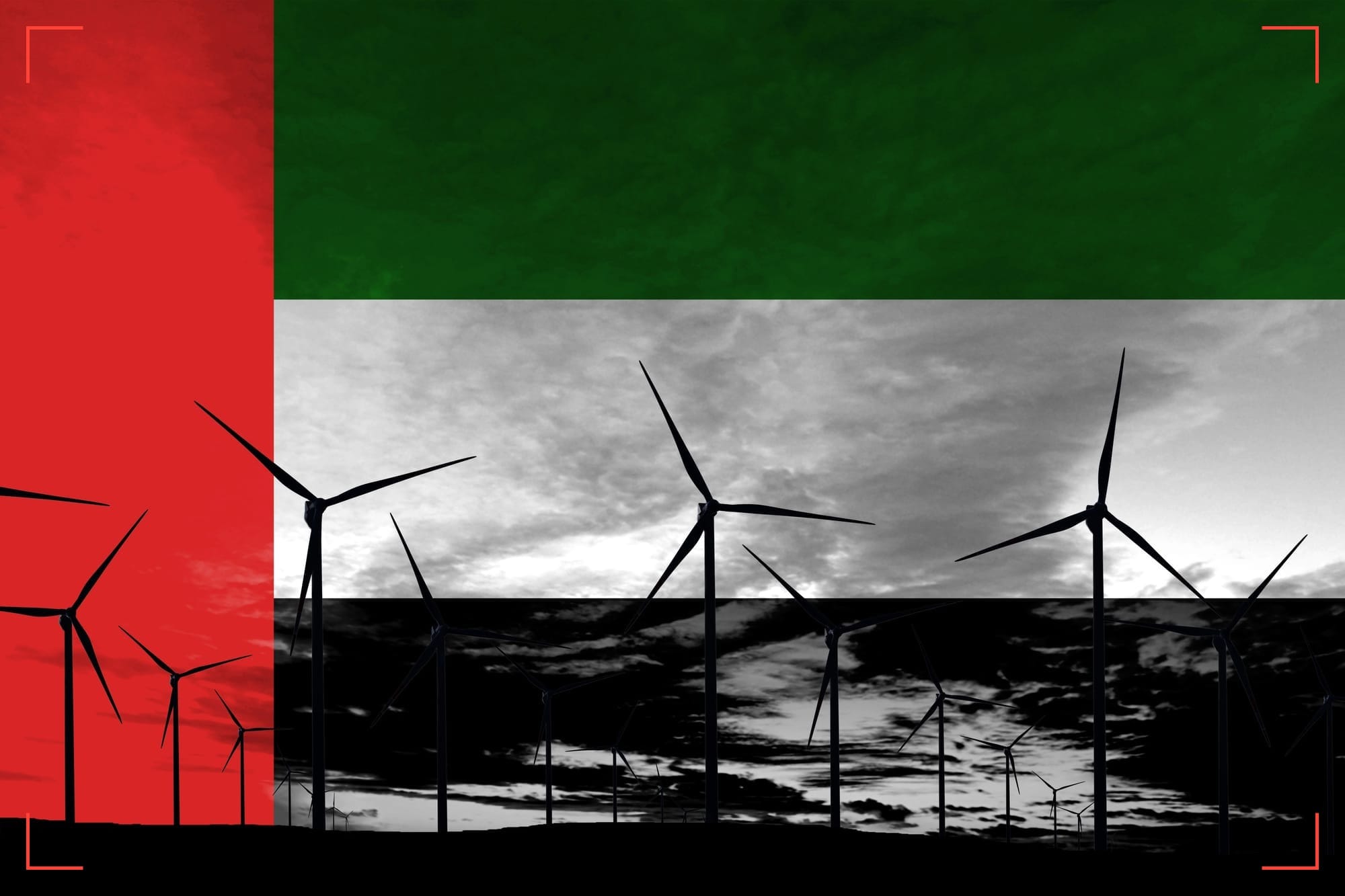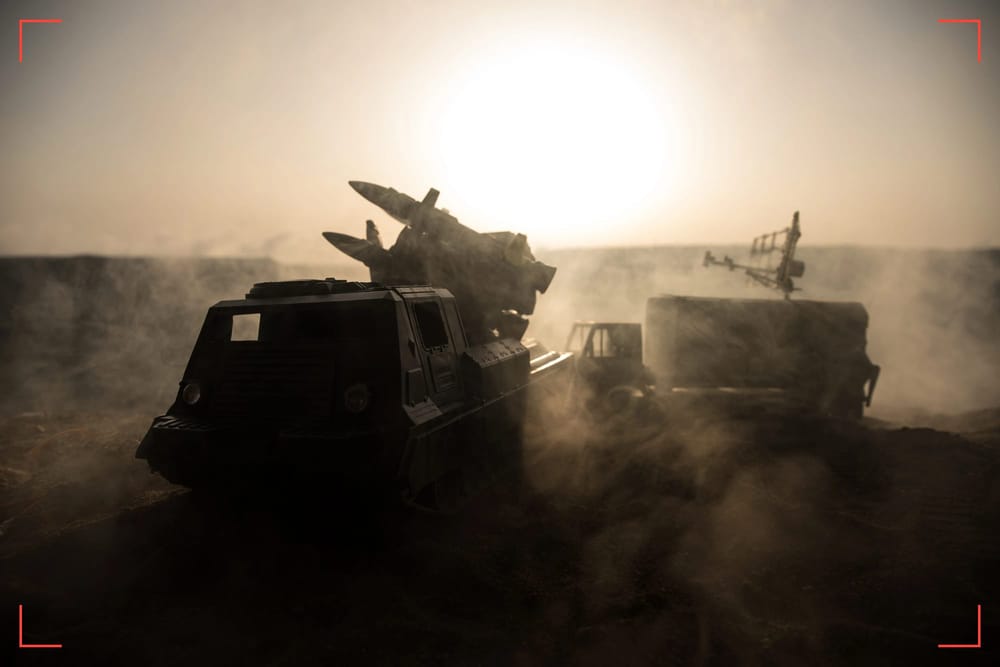Gulf Energy SpecialREPORT
Energy Transition: Strategic Shifts in LNG, Renewables, and EV Markets | OCT 2025

Report Details
Initial Publish Date
Last Updated: 03 OCT 2025
Report Focus Location: MENA
Authors: AA, CB, FZ
Contributors: GSAT
GSAT Lead: MF
RileySENTINEL provides timely intelligence and in-depth analysis for complex environments. Our global team blends international reach with local expertise, offering unique insights to navigate challenging operations. For custom insights or urgent consultations, contact us here.
Key Findings
- Saudi Arabia, the UAE and Qatar are rapidly transforming their economies and their energy infrastructure in order to reduce their reliance on oil. These transformations are set to transform the global energy infrastructure itself.
- Three sectors have been identified as the primary focus of these countries’ transformative efforts: Liquid Natural Gas, Electric Vehicles, and Renewable energy.
- Qatar leads the LNG sector while the UAE is the Gulf’s frontrunner in EVs. Saudi Arabia, meanwhile, has made great strides towards establishing a strong basis for renewable energy.
- With significant investments enabling policy terrain and strong push from the state, these transformative efforts have already yielded significant successes.
- However, a number of structural factors continue to pose risks for the future. Qatar, in particular, faces serious geopolitical pressures in the region that could hamper its ability to attract investments or maintain exports.
- Import reliance is another concern: With Gulf manufacturing capacities remaining low and much of the infrastructure and technology imported, Gulf countries remain at the mercy of price shocks, commodity shifts and supply line disruptions.
- International geopolitical shifts are also set to endanger Gulf efforts for boosting native capabilities, especially as countries such as China seek third markets as tariffs from Europe and the United States target their renewables and EW industries.
- Furthermore, despite a push towards decarbonization, the construction of the infrastructure required for these technologies, and their manufacturing itself, remains highly carbon-intensive, leading to accusations of “Greenwashing”.
- The uneven distribution of technology and services, particularly in the EV sector, is also set to create distortions between metropolitan centres and the rest of the country.
- Nevertheless, the growing popularity of the energy transition and quick update leaves future prospects growth-positive.
Summary
This report analyzes the market strategies of Saudi Arabia, the UAE, and Qatar in the context of the global energy transition. While oil and gas remain significant, these Gulf states are also focusing on expanding natural gas and investing in renewable energy to diversify their economies. The report highlights the political and economic risks of overreliance on hydrocarbons and explores opportunities for international partnerships. The goal is to ensure revenue and enhance global influence as electricity demand grows, without abandoning hydrocarbons entirely. Historically dependent on fossil fuels, these countries are increasing LNG production to diversify revenue and position LNG as a "bridge fuel," while also investing in renewable energy, electric mobility, and clean technologies to reduce emissions. However, risks like market volatility and regulatory scrutiny persist. Their success, underpinned by strategic agility, involves forming long-term partnerships and adapting to evolving market demands. By balancing traditional strengths with innovation, Gulf states aim to revamp their energy sectors and secure economic growth in the transitioning landscape.
Current Events/Major Issue
This section lays out the central event or issue that prompted the report. It includes verified facts and recent developments that define the scope of the situation. Be clear, focused, and objective.
The Gulf Cooperation Council (GCC) is making rapid strides towards energy transition, moving away from its hydrocarbons-reliant economies towards emerging energy ecosystems to diversify revenues and bolster resilience against commodity shocks. Led by Saudi Arabia, Qatar and the United Arab Emirates (UAE), GCC states are diversifying their economies by investing in infrastructure and technologies, while facilitating investor-friendly policies. Key areas of GCC include digital transformation, retail, tourism, social infrastructure and renewables. In 2023, the GCC’s non-hydrocarbons sector grew by 3.7%, outpacing the overall economic growth rate of 1.8%. With oil revenues projected to decline in 2025, the non-oil sector is increasingly vital.
If successful, the Gulf energy transition has the potential to transform the entirety of the global energy infrastructure.
However, these transformations are taking place against intensifying geopolitical headwinds. In addition to regional sources of instability, the GCC also faces global shifts as great power rivalry between the United States, China, and Russia intensifies. With the diversification efforts requiring access to both Western technologies and Asian markets, the GCC faces a precarious balancing act.
Background
The global energy landscape is undergoing a profound transformation, driven by the twin imperatives of climate change mitigation and the diversification of energy sources. As international pressure mounts to reduce greenhouse gas emissions and transition toward cleaner energy systems, countries that have historically relied on fossil fuel exports face mounting challenges, as well as opportunities. Among these are the Gulf monarchies of Saudi Arabia, the UAE, and Qatar, whose economies have long been underpinned by oil and gas revenues.
In recent years, these states have begun to recalibrate their energy strategies in response to shifting global demand patterns, the rise of environmental, social, and governance (ESG) standards, and the growing competitiveness of renewable technologies. The energy transition is no longer viewed solely through the lens of environmental responsibility; it is increasingly seen as a strategic imperative for economic resilience, geopolitical relevance, and long-term sustainability.
Each of the three monarchies has articulated national visions, Saudi Arabia’s Vision 2030, the UAE’s Energy Strategy 2050, and Qatar National Vision 2030, that place clean energy at the heart of future development. These frameworks aim to reduce domestic reliance on hydrocarbons, free up oil and gas for export, and foster new industries, such as green hydrogen, electric mobility, and clean technology manufacturing. At the same time, they reflect a broader ambition to position the Gulf as a global hub for energy innovation, not just fossil fuel supply.
The past five years have seen a marked acceleration in renewable energy deployment across the region. The UAE has emerged as a regional leader, with large-scale solar parks and nuclear energy contributing to a growing share of clean electricity. Saudi Arabia, after a slow start, is now pursuing one of the world’s most ambitious renewable buildouts, with gigawatt-scale projects and green hydrogen ventures underway. Qatar, while more measured in its approach, has made significant progress in solar energy and is integrating renewables into its broader strategy of sustainable development and LNG market leadership.
Analysis and Future Outlook
Liquified Natural Gas (LNG)
The Gulf monarchies are at a pivotal moment in their energy transformation. Historically dependent on hydrocarbons, these nations are now leveraging liquefied natural gas (LNG) to diversify their revenue, enhance their geopolitical influence, and align with the global shift toward low-carbon energy. ADNOC, the UAE's state-owned oil company, is collaborating with Honeywell on the Ruwais LNG project, marking a partnership that dates back to the 1970s. The facility will feature two all-electric liquefaction (e-LNG) trains, making it the first in the MENA region to utilize renewable and nuclear power. The project aims for lower-emission LNG production, positioning it as a "bridge fuel" in the transition to sustainable energy.
Saudi Arabia is making a significant move into the global LNG market, aiming to diversify its energy portfolio and challenge Qatar's dominance in the sector. The country has recently acquired a 49% stake in MidOcean Energy and signed major contracts with U.S. companies, including Next Decade and Sempra. Instead of focusing on importing gas for domestic consumption—costly due to low domestic prices—Saudi Arabia seeks a foothold in the growing LNG sector, highlighting its alignment with U.S. energy policy. However, challenges remain, as Saudi Arabia produces all its gas domestically at fixed prices of $1.25 per million British thermal units (MMBtu), making LNG imports economically unfeasible. While the kingdom holds significant gas reserves, extraction costs complicate the potential for imports.
Qatar aims to nearly double its LNG production to 142 million tons annually by 2030, using its North Field reserves to maintain its position as a leading global LNG exporter. Following Russia's invasion of Ukraine in 2022, Qatar's revenues surged, unlike Saudi Arabia and the UAE, which have focused on net-zero pledges. Qatar prioritizes decarbonization by utilizing LNG as a cleaner fossil fuel. While global LNG capacity is set to increase significantly, with the U.S. expected to surpass Qatar, this expansion poses risks, including oversupply and delays in the transition to renewable energy. Qatar has a long and well-established history in the LNG industry, having built one of the world's largest and most sophisticated LNG export systems over the past four decades. Beginning in the 1980s, with the introduction of its first LNG trains, Qatar steadily expanded production from the North Field—the world's largest non-associated natural gas reservoir. However, its insistence on restrictive destination clauses has caused tension with buyers like Japan and the EU. QatarEnergy manages long-term contracts and plans to introduce additional capacity; however, its preference for oil-indexed contracts contrasts with the growing demand for flexible agreements.
Electric Vehicles
The GCC EV market showcases both opportunity and challenge. Valued at $1.62bn in 2024, it has expanded rapidly in recent years. China still dominates, but local capabilities are catching up fast, fueled by a policy landscape built for growth. Nearly all GCC states have tied sustainability and carbon-reduction goals into their national visions, backing them with incentives like tax breaks, free parking, and waived registration fees.
Falling prices and wider model availability have added momentum, pushing revenues higher. Global giants like Tesla, BMW, and Nissan have expanded portfolios to meet demand, while new local manufacturers are stepping in, intensifying competition and driving costs down.
UAE has taken the lead in the Gulf’s EV transition, especially in Dubai and Abu Dhabi. EV sales penetration sits at 5%, tiny compared to Europe and China but the highest in the GCC. The country aims for 10% of all vehicles and 30% of new vehicles to be EVs by 2030, worth $16.31bn, with half the fleet electric by 2050. It also leads in charging infrastructure, with DEWA and Etihad WE driving expansion. By 2030, demand is expected to reach 23,000 fast public charging points.
Yet native production is negligible. Nearly all EVs and charging equipment are imported from Europe, the US, and increasingly China. Emirati planners are prioritizing mass adoption over building local capacity, leaving the country exposed to supply-chain shocks.
Saudi Arabia, by contrast, is moving from near-zero adoption to rapid expansion under Vision 2030. Backed heavily by the Public Investment Fund, Riyadh expects 30% of its fleet to be electric by 2030. Subsidies mirror the UAE’s, and charging points are set to rise from 1,200 in 2023 to 50,000 by 2030. But penetration remains low at 0.2%. Unlike the UAE, Saudi Arabia is building native capacity: the PIF backs the US-based EV start-up Lucid Motors, founded Ceer, targeting 300,000 EVs a year by 2030, and launched national charging company EVIQ. Still, foreign competition is intense, especially from Chinese firms that have dumped some $4bn of surplus EV stock into the GCC, raising fears of undermining local industry much as Chinese dominance once gutted Europe’s solar sector.
Qatar lags far behind. Just 800 EVs were sold in 2022, with around 100 charging stations, and EVs remain under 2% of sales despite growth. Its National Vision 2030 targets full electrification of public and school buses by 2030, with a Yutong-backed assembly plant due in 2025. Yet like the UAE, Qatar relies almost entirely on imports. Xpeng’s deal with Almana Group underscores China’s growing presence. Infrastructure is thin and highly centralized in Doha, with less than eight vehicles per charging port only because the EV base is so small.
Renewables
The UAE has long positioned itself as a regional pioneer in clean energy. It was the first Gulf country to commit to net-zero emissions by 2050 and has invested in large-scale solar projects for over a decade. The Mohammed bin Rashid Al Maktoum Solar Park in Dubai and Masdar City in Abu Dhabi are flagship initiatives that have helped the UAE build a renewable capacity of approximately 6.1 GW by 2023. The UAE’s updated National Energy Strategy aims to triple renewable capacity by 2030 and reach 30% clean energy in its power mix. Hosting COP28 in 2023 further reinforced the UAE’s commitment to climate leadership and prompted additional ESG-aligned initiatives, including ADNOC’s $15 billion decarbonization plan. Yet, questions remain over the credibility of this green push. Critics point to the UAE’s continued expansion of oil and gas production even as it champions renewables, leading them to raise concerns over potential “greenwashing”. The juxtaposition of climate leadership with ongoing hydrocarbon dependence could complicate the country’s ESG positioning, particularly in the eyes of international investors and partners who increasingly scrutinise consistency between climate pledges and fossil-fuel policies.
Saudi Arabia, traditionally reliant on oil for both domestic energy and export revenue, has made a dramatic shift in its energy strategy. By August 2025, Saudi Arabia’s solar and wind energy capacity totalled at least 58.6 gigawatts, including operational, under-construction, and tendered projects. Under Vision 2030, Saudi Arabia aims to generate 50% of its electricity from renewables by 2030, a goal that will require 100–130 GW of installed capacity. To meet this target, the government plans to tender 20 GW of new renewable projects annually. Additionally, Saudi Arabia is investing in green hydrogen with an $8.4 billion project at NEOM that will use 4 GW of renewable energy to produce hydrogen for export. These initiatives not only support ESG goals but also attract international investment and create new industries aligned with economic diversification. However, the scale of these ambitions brings significant challenges. Achieving 100 GW of renewable capacity in just a few years will demand rapid project execution, regulatory efficiency, and large-scale grid modernisation. Financing remains heavily tied to oil revenues, which leaves renewable expansion vulnerable to fluctuations in global energy markets. Meanwhile, the NEOM hydrogen project represents a high-stakes bet on an export market that is still in its infancy. If global demand for green hydrogen develops more slowly than expected, the risk of overcapacity and stranded assets could undermine returns and investor confidence.
Qatar, while smaller in scale, has also made meaningful strides in solar energy. In 2022, Qatar commissioned its first major solar project, the 800 MW Al-Kharsaah plant. This was followed by two additional plants in 2024 at Mesaieed (417 MW) and Ras Laffan (458 MW), bringing total solar capacity to around 1.7 GW. The country’s National Renewable Energy Strategy 2024 targets 4 GW of solar capacity by 2030, which would supply up to 30% of peak electricity demand. Qatar’s renewable strategy is closely tied to its ESG positioning. Although it announced its net-zero goal later than its neighbours, the country has aligned its energy plans with a 2050 carbon neutrality target. Solar investments are framed as part of Qatar National Vision 2030 and are intended to reduce emissions, preserve natural gas for export, and respond to international scrutiny especially following the 2022 FIFA World Cup.
Stability Factors
- Degrading Factors
- The LNG expansion plans aim for an 80% capacity increase by 2030, which could lead to oversupply. This could lower global prices and profitability, as new supply from the U.S. and Qatar may impede competitors' growth.
- The global push for decarbonization and focus on ESG factors present a long-term challenge for the LNG industry. Despite being a cleaner fossil fuel, LNG's future is uncertain as countries invest more in renewable energy and nuclear power, which may lead to a decrease in demand for fossil fuels.
- Geopolitical tensions , especially concerning Iran and Israel, leave much of the GCC in the crossfire between the two powers, resulting in supply chain disruptions and price fluctuations that would likely hamper growth.
- Stabilization Factors
- Europe's shift away from Russian pipeline gas and Asia's rapid industrial growth will continue to drive demand for flexible LNG supplies.
- Global LNG supply is projected to grow by 80% by 2030, stabilizing energy markets, addressing the European energy crisis, and lowering natural gas prices in Europe and Asia.
- The relatively-supportive regulatory and policy environment is highly likely to result in a permissive business environment that accelerates intake and offers room for innovation and collaboration.
RileySENTINEL
Our RileySENTINEL platform delivers comprehensive global, regional, and country-specific situation reporting and analysis. Powered by the Riley Risk team, our Geopolitical & Security Analysis experts provide:
- Timely, on-the-ground intelligence
- In-depth analysis of high-risk environments and events
- Proactive insights to navigate volatile operational contexts
Our globally distributed advisors and analysts combine global reach with regional expertise and local insights, empowering clients with unique perspectives to make informed decisions in challenging environments.
Enhance Your Risk Management Strategy
For deeper insights or enhanced custom reporting tailored to your specific needs, we offer on-demand consultations. An expedited response option is typically available, based on our team and advisor availability.
To explore how our risk advisory services can strengthen your business operations and help you achieve more, schedule a call with the RileySENTINEL team using the service booking link below.
Expert Analysis On-Demand: Request Support
Leverage RileySENTINEL's expert team for deeper analysis and tailored insights:
- On-demand consultations with our global network of advisors
- Custom reports focused on your specific operational contexts
- Proactive risk mitigation strategies for volatile environments
- In-depth analysis of regional stability factors and future outlooks
- Expedited response options for time-sensitive inquiries
Click this link to be redirected to the support request page.
RileySENTINEL: Global Insights. Local Expertise.








